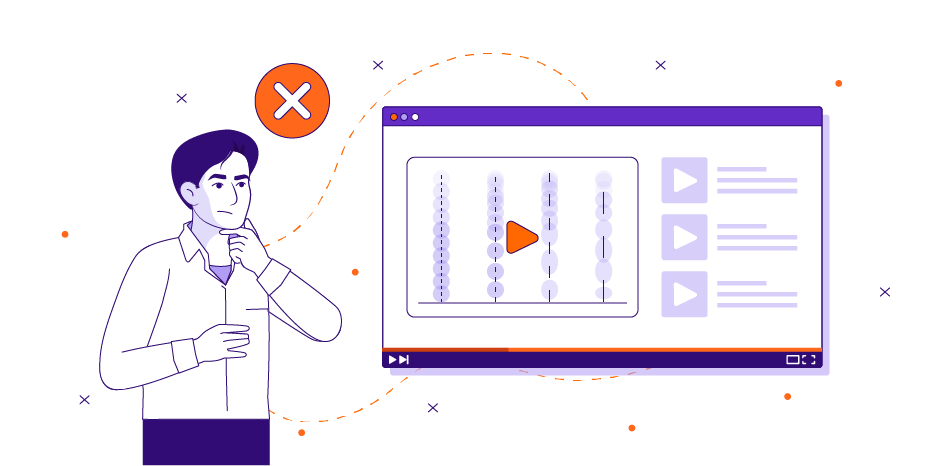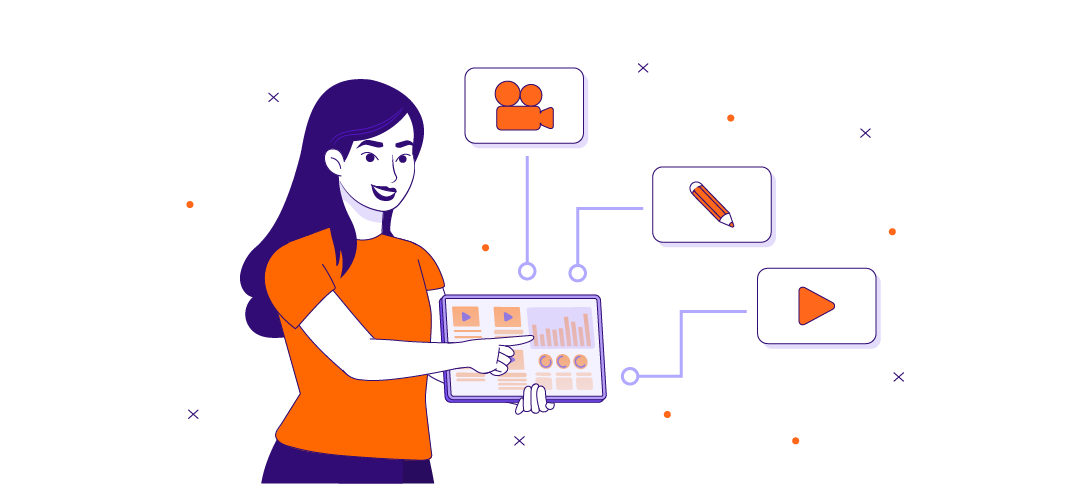
Science of eLearning Animation: How Animation is Used in Education
Too often, educational video is dismissed as an “easy way out” when it comes to teaching new material, especially if those videos happen to be animated.
This way of thinking is particularly difficult to shake in the corporate world.
After all, people spend too much time in front of screens as it is. Shouldn’t the workplace be all about PowerPoint presentations, sleek graphs and charts, and lofty talks about “the bottom line”?
The reality is that animation in an educational learning environment can transform the way we grasp and engage with new material. But how does it work? In order to fully understand how animation is used in education to help employees understand complicated ideas and processes, it is important to understand how exactly the brain takes in new information.
How We Learn
Before you can teach anyone effectively, it helps to know how the brain works. Cognitive Load Theory, developed by John Sweller in 1988 has been instrumental in educational innovation. As it turns out, this theory can be aptly applied to any kind of learning.
Cognitive load theory neatly divides our learning process into three sections: sensory memory, working memory, and long-term memory.
Sensory memory is what a person is immediately aware of, before they can understand the context (e.g. reviewing a series of buttons on a control panel before even knowing what any of those buttons do).
That unit of sensory memory moves quickly to working memory–think trying to make sense of the buttons’ significance. Finally, a well-designed training program will help an employee transfer the newly presented information from working memory to long-term memory, where it can remain indefinitely (being able to recall what buttons to select to complete a task safely on the job).
While long-term memory is believed to be infinite, sensory memory and working memory are limited. Sensory memory is instantaneous; it alerts the brain as soon as something of note occurs. Moreover, sensory memory is useful for communicating our surroundings, but has little capacity for recall and doesn’t process information well.
Working memory can, generally speaking, hold between 3-5 pieces of information. So, if the sensory memory is overloaded, the working memory quickly clogs and information is entering and exiting the limited space of working memory before anything can be understood and committed to long-term memory.
With such a limited bandwidth in both sensory and working memory, it is extremely important not to cognitively overload the mind when trying to convey important information.
There are two primary ways in which information makes it from working memory to long-term memory: visually/pictorially and auditorily/orally. Generally speaking, information is best learned when combining visual and auditory methods: this is known as the “Modality Effect”.
Visual information and auditory information don’t compete with each other in the same way that, say two visual pieces of information, would compete with one another.
For example, med students may struggle to understand how to read some x-rays thoroughly if someone just explains the process to them or hands them a sheet of paper that illustrates the steps with little to no explanation. However, if that same process is shown on screen while someone narrates what is happening as it happens, learners are much more likely to commit each of these steps to memory. This is the key to how animation is used in education: audio-visuals.
The Science of eLearning Animation: How Does Animation Help Us Learn?
If a mix of auditory information and visual information is all that’s needed to lighten the cognitive burden on the average learner, why is animation so important to helping that learner better grasp new material?
Simply put, animation offers one unique element: movement. This activates the third modality of learning: kinesthetic learning (hands-on learning).
Think of it this way: would you rather watch someone point at a few indistinguishable gray objects on a desk or watch someone put each and every one of those tools to use?
The latter is not only more entertaining, it also allows learners to engage with what they are seeing by using both their sense of sight and their sense of hearing. Seeing static images on a screen simply does not stimulate these senses. Finally, when a learner can interact with the animations, they are committing the new information firmly into the long-term memory bank allowing for the science of eLearning to take place using their senses to learn.
Do you want to learn more about eLearning Video Animation? Read more here

Benefits of Incorporating Animation into Corporate Training
Every day, more and more corporations are choosing to incorporate animation into their training and educational material. Not just because it’s easier, cheaper, and faster, but because it is simply better than traditional training methods. Here are a few reasons how animation is used in corporate education and why it works:
Engagement
It perhaps goes without saying that kids are more inclined to watch cartoons than they are to watch live-action content. Believe it or not, however, adults are very much the same in many regards. This is because cartoons signal the brain that it is time for something fun: an escape from the real world into a world where anything is possible. For this reason, subconsciously, the brain is more likely to engage with animated content than it is to engage with live-action content.
Watching cartoons presents the learner with an opportunity to disengage from the common stressors of reality without disengaging from the material presented. Information relayed through animation is essentially making its way into the minds of learners without those pesky thoughts of bills that need to be paid and milk that needs to be picked up on the way home. in other words, it limits distractiions.
Cost of Production
Although contracting an animated video can be costly, it can take less than half the number of people to put together a great animated presentation as it would to put together a mediocre live action presentation. Where a live action video would need a set, a location, writers, directors, a cast, and a crew, an animated video team would need only a handful of animators with as many computers.
Furthermore, in a pinch, learners are still more likely to respond to a poorly produced animated video than they are to respond to a poorly produced live action video, and one will cost you far less.
Cohesive Branding
In a live action shoot, your vision is often at the mercy of the hired creative team. When working with finite resources, it can be difficult to translate your exact vision into dynamic learning material, especially when you have only human actors to work with (who may be incredibly talented but just lack the vibrance and flexibility of a cartoon character).
In eLearning animation, you have the liberty to use your exact imagery/branding, while also being free (and encouraged) to abandon realism when conceptualizing how best to illustrate your point.
Additionally, if you don’t like the finished product in a live action video, it can be extremely difficult to reassemble the team in order to rewrite, reshoot, or re-edit. With eLearning animation, edits and additions, while not always cheap, can be done with much less overall headache than having to newly configure 25 conflicting schedules.
The Future of Education
It is easy to get swept up in the conflicting information of the information age. Some hail the television as a marvelous invention; others condemn it as a distraction that has no place in schools or workplaces. But what is the truth?
The fact of the matter is that animation is the future of education. When viewed in conjunction with the cognitive load theory, animation effectively accesses all three matrices for processing information: sensory memory, working memory, and long-term memory. How we use animation in educational training is a powerful tool at your disposal when applied correctly.
How to Incorporate Animation Into the Workplace?
Incorporating educational animation into a lesson plan does not need to be all-consuming. The beauty of educational animation is that it facilitates discussion and practical applications, which can further engrain the material into the learner’s long-term memory.
eLearning Animation can also reinforce material already learned, encouraging the learner to view the material in a different context. This is especially helpful when animation is used for procedural training: the learner can be taught the process, and then immediately relate it to their working environment with the help of an animated video.
eLearning animation does not need to be rigidly structured into a curriculum, but it is encouraged that it appears in the educational/training material with some regularity. According to a study published in the Journal of Education for Teaching (JET), presenting a consistent cast of characters in animated eLearning videos will heighten one’s ability to empathize and connect with the material.
The Bottom Line
In sum, how animation is used in education simply opens the door to better education; all that’s left to do is walk through.
Already have a project in mind? We can help you create engaging eLearning Animation and Training Videos. Reach out for a free consultation.
